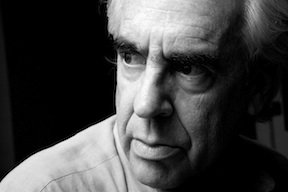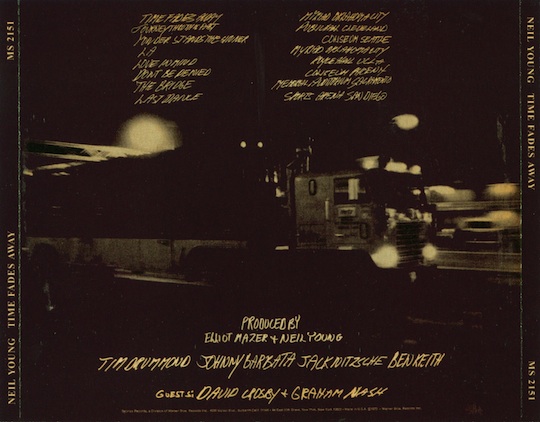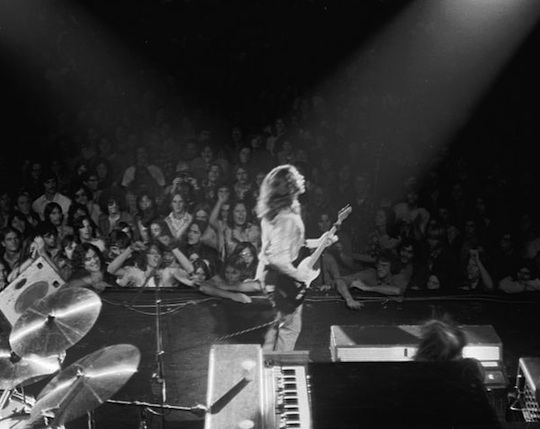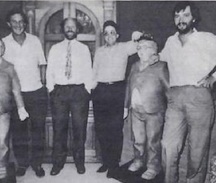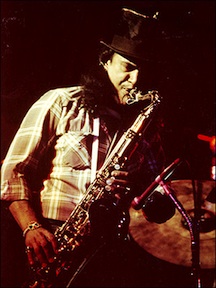Apr 24 2012
They Don’t Make Them Like Rory Anymore…
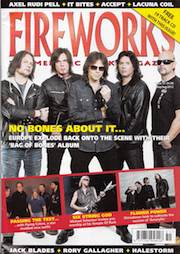 |
In the latest issue of Fireworks Magazine, Sue Ashcroft interviews Donal Gallagher, the brother of the late Irish Blues legend, Rory Gallagher. Special thanks to Bruce Mee and James Gaden of Rocktopia for allowing me to post the interview. For more great interviews be sure to pick up the latest issue of Fireworks at Rocktopia.net |

In 1995 the world lost a truly inspirational guitarist and songwriter in Rory Gallagher. Now, his first six albums have been re-mastered and reissued from the original quarter inch tapes. Rory’s brother and former manager Donal has been flying the flag for Rory’s music for many years and spoke frankly to me about his hopes for his brother’s music in the future. But first, I decided to totally freak him out…
Donal, let me cast your mind back to 1966….. do you remember your cousins coming over to visit you from Scotland?
Yes… I’m worried now.
They had a girl called Pamela with them?
Yes, I remember her!
Well, that’s my sister!
Oh my goodness! That’s amazing!
We actually have a lot more connections than that, but I’ll get to those later. I want to know about how you feel Rory’s legacy is being carried on. Are you ever surprised by the level of love and respect that still exists for Rory all over the world?
I’m always pleasantly surprised – I don’t take it for granted though because I know the kind of world it is. It’s wonderful that the feeling is there, on the one hand, but on the other, when Rory was alive, you wish people were, dare I say, more appreciative of him, particularly in the latter years. I’m thrilled to bits the way it’s grown and particularly the younger generations who seem to have grasped the music and understood it and got the same love that their mums and dads did. I find that quite unique.
You stage the Rory Gallagher tribute weekend which is now in its eleventh year, winning awards for being one of Ireland’s best festivals and with people AND bands coming to it from all over the world – that must make you very proud?
It’s fabulous and the network that has evolved from it – there was another tribute weekend a few weeks ago in Oslo! Then, there’s Holland and Cork both having them in March for Rory’s birthday and the last call we had was from a guy in New York who’s doing one in June. It’s just extraordinary, but the great thing is that they all seem to swap bands and I love the interplay. It’s not about the records as such, it’s about the live music.
And that’s proven by the fact that Rory’s biggest selling album was the Live ’74 album! You’ve managed to get the remasters all sounding amazing. How did you go about doing that? It’s been a bit of a family affair, hasn’t it?
Well, respect to my son for that – that’s the top and bottom of it! It all came out of the last album ‘Notes From San Francisco’ to be honest. A lot of the fans wanted to have Rory on vinyl and the label said they would do a test run on that album, just to see how it went. They put it to
their sales staff and the limited edition that they intended to do was sold out before they’d even pressed it! So, then they came back and said that we were right and that they’d do the vinyl on the other albums for the 40th anniversary of the first releases. To have them in time for that would be something I thought Rory would have loved to see. So, in the course of doing that, Dan (my son) asked to do the project. He’s a guitarist – I think the artist gene must’ve bypassed me! So, he listened through the tracks and he decided that we should go back to Rory’s original mixes – the way he heard it himself and then apply the new technology and the new studio techniques to get the best out of that. In fairness to him, it was his concept to do it that way. We went right back to the original quarter inch and half inch tapes – there were a whole variety as we’d retained everything. So, it was the actual same tapes that Rory took to the studio. Obviously with the technology nowadays you can get so much more, so that’s how that was achieved. Then, in addition to the mastering, Sony said we should do a box set, but I said, as nice as that is, and however celebratory, if you want to turn someone on to Rory’s music, you have to make it affordable, because not everybody has the money in the present economic climate to buy a very pricey box set – let’s do it as it was originally done, so that you can buy one, or all, or none of them, that’s great – if they want to buy the whole set, even better!
How refreshing! Normally, people would say “No – we’re releasing it as a box set, because that’s going to bring more money in.”
We did get them to do better covers because the plastic jewel cases for normal CD’s weren’t always good enough to get good artwork, but we pushed them further and said, it would be great to have the first six look like mini vinyl albums.
Yeah, they’re great – I love the cardboard covers with the inserts. They really are like mini albums.
In fairness, they didn’t spoil them, they went with it and did the extra pictures and it was actually a guy who they fired from Sony who did the artwork, so they brought him back in and it was a labour of love for us all, to be honest.
So your family all still feel that connection to Rory and his music?
Oh very much so. Needless to say, there’s not a moment goes by that I’m not ‘preaching the gospel’ as it were. I have four kids and they all grew up with it – my two eldest boys saw him at Hammersmith Odeon. My youngest was too young to remember, but still knows the music. My eldest son now lives in Cork and he likes the scene over there. He’s very proud of it all and I think they all get such a kick out of people posting videos or articles about Rory on Facebook and other social media (I’m not one of those people, but I know they get a real buzz out of it).
Did you ever think that all these years later you would still be carrying on his legacy and that people would still be interested in the music?
Well yeah, I always felt that I was committed because I did feel like there was a certain injustice done to Rory in some ways. I think he was overshadowed and overlooked for a lot of stuff that nobody remembers now who or what it was, but he didn’t seem to get his fair share of the limelight, particularly in the latter years. Because he didn’t play the corporate game, he did get airbrushed out of the media for a long time. He knew though that the long term was what it was about, the music itself and him as a musician and after all, he had to live with himself and his decisions. I knew the potential of the music, so I never had my doubts. I suppose though, to stand back and think about it, if you’d asked me the question in 1995 after Rory died, where I thought we’d be at this point, it’s extraordinary really. Even when you’re a certain age, you don’t think about it. I remember hearing Sergeant Pepper’s for the first time when I was all of seventeen or eighteen and I remember the line “it was 20 years ago today….” and thinking “how ancient was that, twenty years ago?!” It’s like someone saying now “it was forty years ago today”.
I know what you mean – I keep thinking how have I been married twenty years when I’m only seventeen in the head? I notice at the festival this year, although you’ve not announced the full lineup yet, you have announced Pat Macmanus?
I don’t know who’s playing to be honest. Trying to get hold of Barry O’Neil is nigh on impossible! He got married on the 30th December and I was at his wedding, but I haven’t seen him since, despite all the attempts, but I know he was changing things to be inside a marquee so the whole format of the festival was going to change and we were going to have a discussion about it, so I’m glad you’ve reminded me! Pat, I saw at the wedding – he’s a lovely fella.
Well I had never seen him play live, even though I’ve been a fan of Mama’s Boys for thirty years, but I saw him at Hard Rock Hell in December. He had stepped in at the last minute when another band had pulled out and I think, because he’d played with the Quireboys in Belfast the week before, they’d managed to persuade him to come and fill in. You know – it was the first time in a very long time that a guitarist has moved me to tears. He was just amazing and I’m glad that you have that kind of player at the Rory Festival. That’s what it’s all about, isn’t it – people with the passion for the music?
It’s the sincerity as well, that’s important.
How many people attend the show every year now?
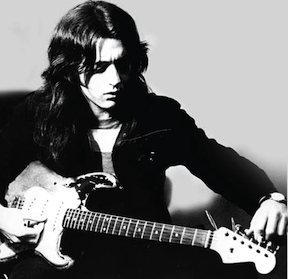
Well, because it’s over four days, some people come for just one day, some come for the whole thing, so all in all, it attracts about 20,000 people. This is what I’ve been waiting to discuss with Barry – as it was, every bar in town had a Rory band on or they’d be playing Rory’s records, so initially when it started off, they were all contributing to help support the bands to come in, but because of the total success of it, a lot of the places don’t put their hands in their pockets anymore. It’s left Barry with the dilemma – what do you do then because a lot of the bars have the crowds coming in anyway, but they’re too mean to contribute. So, Barry’s talking about putting it into a marquee so that it’s more contained and that way, the money that’s spent goes to the bands and then it also gives them the possibility to try and get someone like Joe Bonamassa or somebody of that calibre. The thing is, there’s a Scottish singer Sandi Thom, who got my number from a friend of mine and called me up. She explained to me that she’s Joe Bonamassa’s girlfriend and that Joe was coming to town. She wondered if there was any chance that I would go and say hello to him. I said of course and that I’d been hoping to do that because Joe’s covered Rory’s ‘Cradle Rock’ and always spoken very highly of Rory and every other time he’s been in London, I’ve been out of town, so I’d been waiting for this to happen. So, I said that I would go along and see him at the Hammersmith Apollo. In the course of the conversation I said that really and truly, when these guitarists ask to meet me, it’s not the brother they want to meet, it’s the guitar! They want to hold ‘the mistress’. Johnny Marr did the same thing. He called me on my mobile one day and said “sorry about Rory, blah, blah, blah, could I come and have a cup of tea with you sometime?” and I said “sure – when were you thinking about?” and he said “well, what are you doing tomorrow?” and I said “yeah, if you like”. Gave him my home address and he said “ok, I’ll be down first thing”. So, he hung up and then a few minutes later he rang back and said “just one more thing – before I get there can I just ask – I don’t suppose there’s any chance I can hold Rory’s guitar?” so I know that’s what they’re all after! He must’ve set off very early from Manchester, because he was at my house at 9 in the morning! So anyway, back to the story. So, I brought the Strat to the theatre – it was Sandi Thom’s Christmas present to Joe. It all went very well and it was lovely meeting him.

Now I have to get on to one of my other connections with you. My friend Alec Galloway is in the process of designing some stained glass panels of Rory for you. I’ve seen a couple of his sketches so far and they’re fantastic, but how did that come about?
Well, it was through Ronnie Garrity (former Down n Outz and current Henry Gorman Band and Heavy Metal Kids bassist) who had told me about his artist friend when I was up visiting him. On the Saturday morning, we went over to Alec’s studio. It was a bit of a setup between Ronnie and my wife, to be honest. Ronnie took me up there to see the Rory stained glass which was just amazing.
He’s a very talented boy, isn’t he?
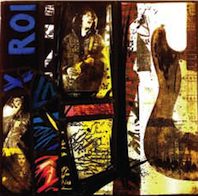
Absolutely! The thing is, if somebody said to you ‘stained glass’ and ‘Rory’, you would think they were mad, but it’s such a lovely composition – abstract in some ways, but very beautiful in others. He’s such a lovely guy and he explained how he’s trying to further his career through commissions, so I made a few suggestions and then Alec said he’d love to come down and sketch Rory’s guitar, feel it and get the whole ambiance of it, as it were. So, he came down just before Christmas and stayed at the house and had the guitar with him for the whole night. I’m a member at the Chelsea Arts Society and I said that I thought it would be good for Alec to be a member there, so I took him up and we bumped into a few people I know there and I spoke to the council there and they understood about him being a teacher and so on, so they had no problem in giving him a reciprocal membership. They have a great space to exhibit and get your name out there amongst the artist fraternity in London, so I now have a piece to do for their website on the subject, so I’ll get that up soon so people can read about it. Another thing I wanted to talk to Barry O’Neil about is where I commission a piece for perhaps the music library in Cork or somewhere, but I’d like to be more specific as to where a piece is going, other than make a piece that they just shove in somewhere you wouldn’t particularly see it or whatever. Even the piece I got, it took me a while to put it up in the right place. It’s much better if you put lighting in it, so now I’ve got it to be mounted on a window so that in the daytime you get the natural light and in the evening you can plug it in as extra lighting for the room.
The thing is, my sister told me about how your dad used to make stained glass pictures out of sweet wrappers!
Yes, that’s right! It’s great that she remembered that!
I think it’s amazing and strange that your dad used to make stained glass pictures from sweet wrappers and here you are commissioning proper stained glass to commemorate one of your family… and the person doing it is from Gourock!
Luckily, I still have one that my dad did. It was done during the war years when they didn’t have a lot. My dad used to get just a piece of glass and shape it all and then hand paint a scene in black paint and then, over a period of time, he’d collect sweet papers – you know, the foil and cellophane – and there were all sorts of patterns on those. I remember as a kid there was a magnificent one of a woman running across a common and she was in a full, flowing Victorian dress with a brolly and a bonnet and so on. The sweet wrappers were glued to cardboard before they were mounted on the glass, so it had a beveled effect.
The one I still have, the glass is cracked so there’s not a lot I can do with it, but that’s of an old sailing ship in full sail. The sails are in silver and there’s a storm in the background – he was a very artistic man, plus he was a musician. He was in the Sean Kelly Dance Orchestra. He would’ve been Ireland’s answer to Jimmy Shand! He won all these cups and medals, but then the war broke out. There was no conscription in the north of Ireland, so you either had to take a boat to Liverpool or wherever and
enlist in some regiment you didn’t know, but at that time he couldn’t afford that, so he walked across the border to Donegal and joined the army, where he was transferred to Cork and that’s how he met my mother.
Wow. You had an album released in 2003 with a lot of previously unreleased tracks featuring some top notch musicians. Considering that some of the most famous players in the world, such as Slash, Brian May, Johnny Marr, Joe Bonamassa, etc. have all said how big an influence Rory has had on their lives, do you think that the way to go in the future might be to ask all those people to record their favourite Rory track for an album?
Oh yes, absolutely! That’s actually something that we have on the drawing board, but it’s been there for a little while because the thing is, they all say they want to do it, but when you push them to do it….I mean, Brian May was the first one who said he wanted to do it and that was just after Rory died. He said “I’m going in to the studio with Roger Taylor and we’re going to record a version of ‘Morning Sun’. I’ll send you the master tape and you can do what you like with it” – I’m still waiting for it! I bump into him and he keeps saying “oh, I must do that for you!” Equally, Johnny Marr was saying he wanted to do a track from ‘Calling Card’ – it was good of him to want to do an obscure track. U2 used to do ‘Moonchild’ as their sound check, so I asked them and they said “yeah, yeah, we’ll get you a version of it”. Their sound engineer is a guy I trained up in Cork and he said he would just record it off the sound board one day, but it’s just a case of getting everybody together at the same time. I actually think the best way to do it would be to get all of the bands in the one room at the same time – almost like a Jools Holland type show. There was another guy who came to me with another idea which was to record these guys by taking a mobile unit to where they were and recording it live. I think ZZ Top were up for doing one, but at the end of it, the budget the guy wanted for doing it was out the window. In some ways, I’d like to ask Johnny Marr to produce the album because you have to hand the reins over to someone else, because in some ways if it’s ‘Rory’s brother’ then I think a lot of the guys perhaps feel inferior trying to do a Rory track because “oh God, I can’t do it better”, or “I can’t do it justice” their heart’s in the right place, but I think they need to be coached by somebody else entirely.
It’s not about doing it better or doing it the same, it’s about doing your interpretation of how you think it should be played or how you ‘feel’ the song, isn’t it?
Yes, I mean Joe Bonamassa agreed to do it and I was speaking to Sandi, whose music I wasn’t familiar with, but I got her albums and I was quite knocked out by her. I thought God, this has passed me by and I feel guilty speaking to people when I don’t know about their music. So, then I called her up and said “Joe wants to do a track for the album, so I’d love for you and he to do a version of ‘I’ll Admit You’re Gone'” because it’s a track with a woman’s voice on it and I think you have to think outside the box when you’re trying to put something like this together. It doesn’t have to be a bloke on a guitar playing faster than Rory’s solo, but that’s the way various people tend to think about the tracks – how do I make it heavier than Rory or how do I rock it out more.
Thank you for your time Donal and you never know, with all our weird connections, we might bump into each other in Gourock some day!
Wouldn’t that be lovely? My cousins had always told me how beautiful it is, but being out on the road all the time, I never had the time to go and, when I eventually did, it was so amazing. I mean, the topography of the place and everything – I’m even looking at weather maps and I’m just so intrigued about how the lochs and the mountains and the way Gourock is on the bend of the river. Even someone who came to dinner here the other night who was sent to boarding school from Ireland to somewhere outside Glasgow and they were describing how they would take the boat over to Glasgow and it would stop first at Gourock and all the animals and goods would be taken off and the ship would then continue up the Clyde into the city. But it’s just amazing when you get chatting to people about Gourock.
I’m telling you, it’s the centre of the universe – all roads lead to Gourock!
It really was an honour to chat to Donal about his family history, and indeed MY family history and home town! It seems that enthusiasm for Rory Gallagher is still building year on year and is not only helping his home town and other musicians, but is still inspiring artists in other media to be creative. What a true legend.
Rory Gallagher’s first six albums have been remastered and reissued from the original quarter inch tapes. The albums are released by Sony Legacy. For more information visit www.rorygallagher.com.
